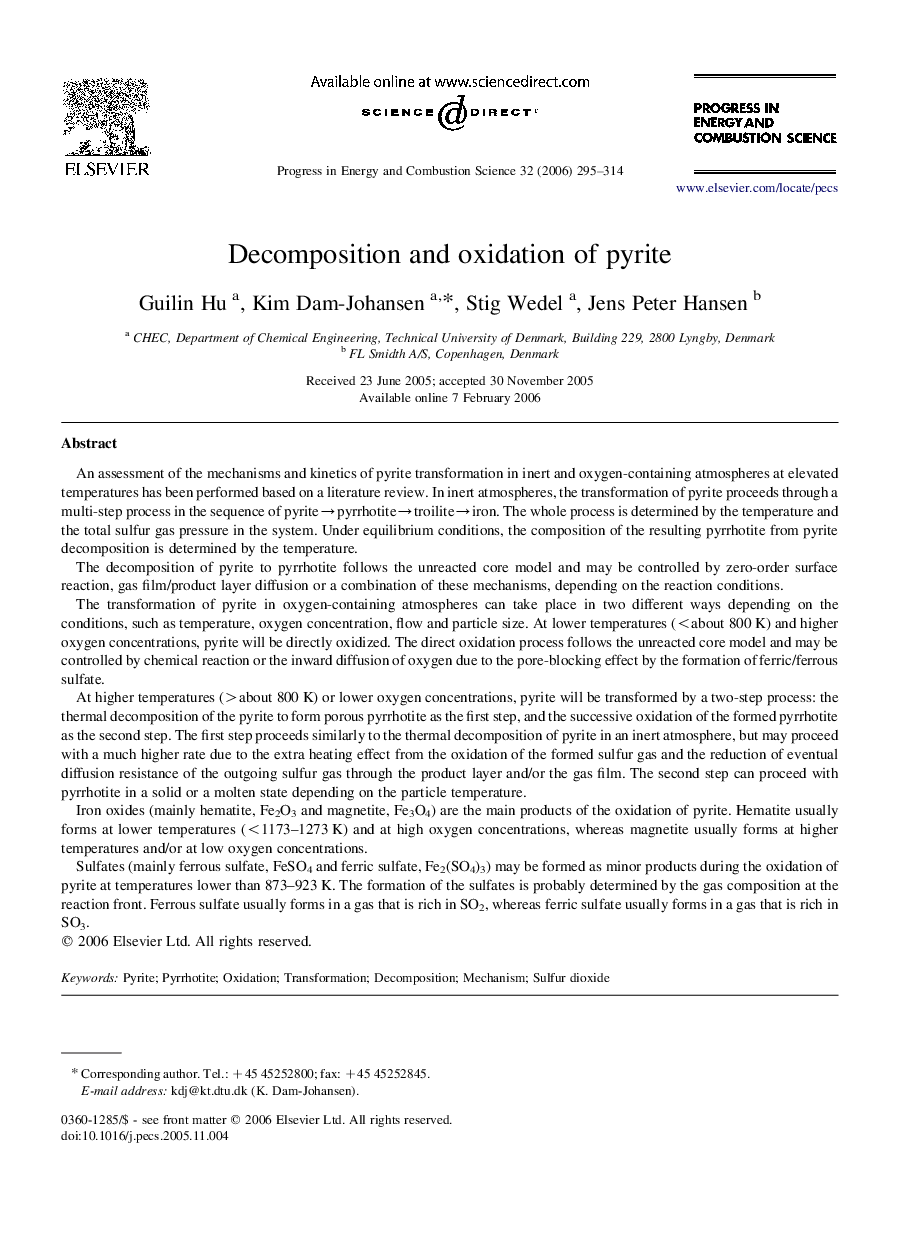| Article ID | Journal | Published Year | Pages | File Type |
|---|---|---|---|---|
| 241790 | Progress in Energy and Combustion Science | 2006 | 20 Pages |
An assessment of the mechanisms and kinetics of pyrite transformation in inert and oxygen-containing atmospheres at elevated temperatures has been performed based on a literature review. In inert atmospheres, the transformation of pyrite proceeds through a multi-step process in the sequence of pyrite→pyrrhotite→troilite→iron. The whole process is determined by the temperature and the total sulfur gas pressure in the system. Under equilibrium conditions, the composition of the resulting pyrrhotite from pyrite decomposition is determined by the temperature.The decomposition of pyrite to pyrrhotite follows the unreacted core model and may be controlled by zero-order surface reaction, gas film/product layer diffusion or a combination of these mechanisms, depending on the reaction conditions.The transformation of pyrite in oxygen-containing atmospheres can take place in two different ways depending on the conditions, such as temperature, oxygen concentration, flow and particle size. At lower temperatures (
